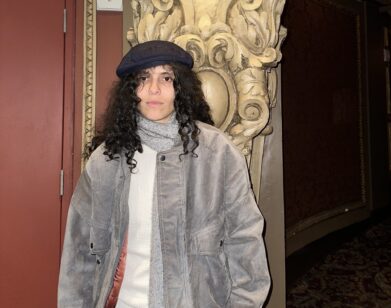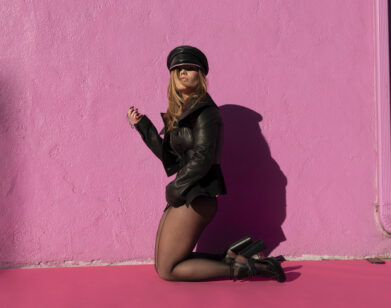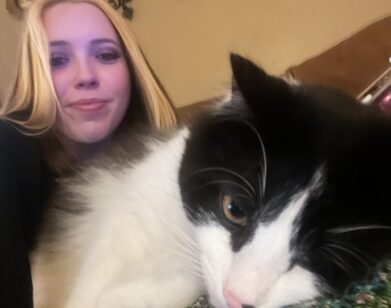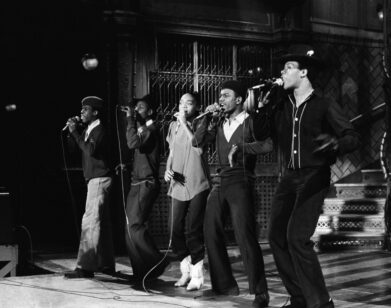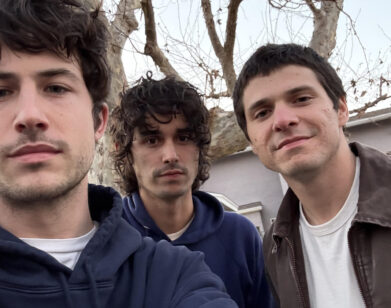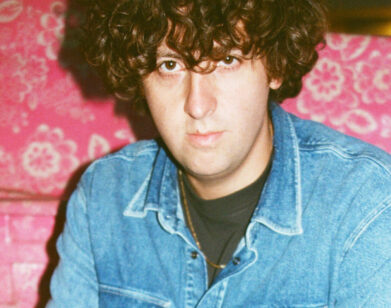Eraas Take Their Time
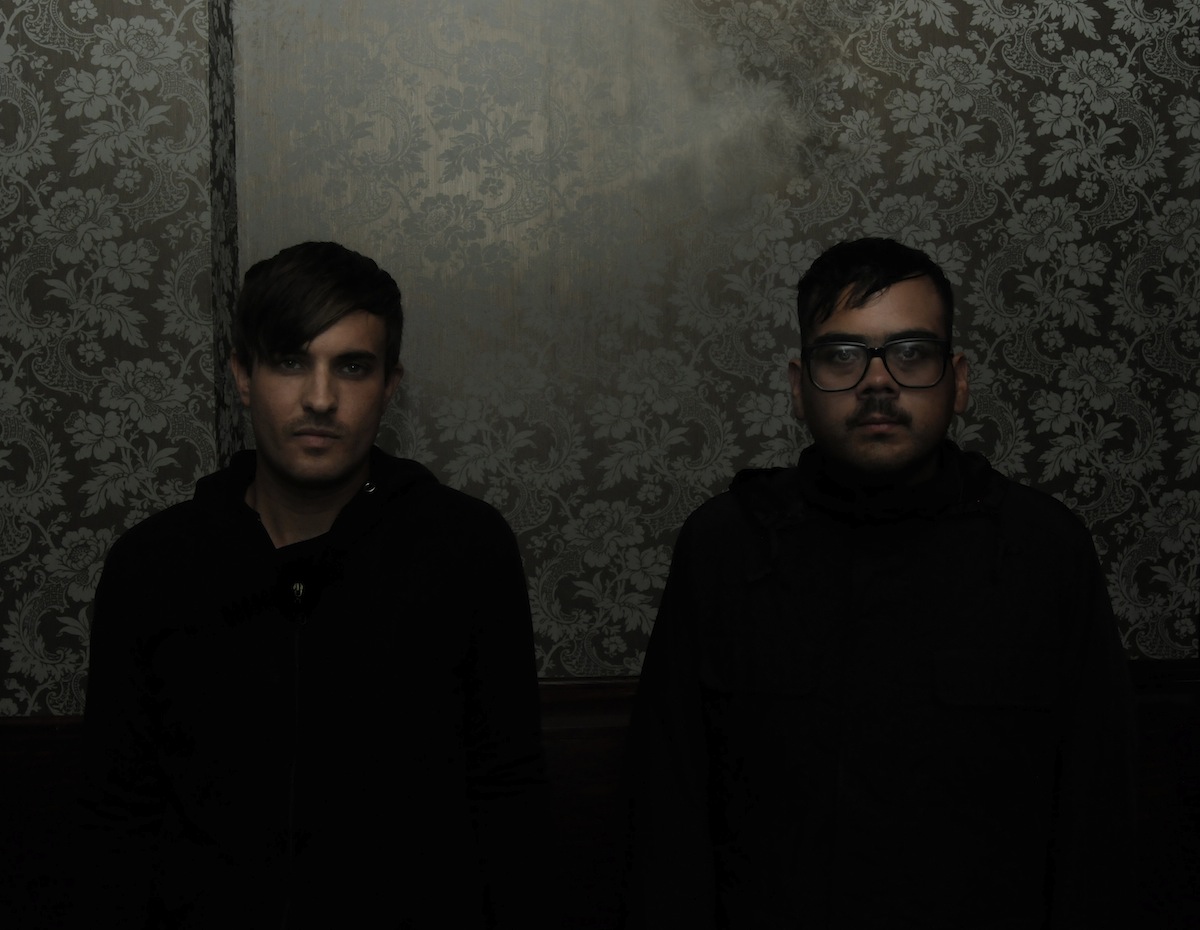
You can take the boys out of New England, but you might have a hard time taking the dark and weird vibes out of the New England boys—unless they’re filtering them directly into their music. Case and point: Robert Toher and Austin Stawiarz, the evil geniuses behind emerging band, Eraas. The pair united in early 2010 after the disintegration of their former project, Apse, an elaborate post-rock outfit signed to the cred-heavy ATP Recordings. Now based in Brooklyn, the new sound of Eraas blends various ’80s “waves”—ever-moody and pulsing—with tasteful breaths of electronics. It feels solid and dance-worthy, without crossing too far into pop territory. Toher’s warm, ghostly wails weave between the compositions, invoked with a sense of his rural upbringing around howling winds, barren winters, and potentially haunted colonial houses.
In anticipation of the October release of their self-titled debut LP on new Brooklyn label felte, Eraas have leaked two singles: “Briar Path” and “Fang.” Both tracks retain Apse’s attention to kinetic rhythms, but with a simplification of the dynamics and overall instrumentation. For Toher, who started Apse in 1999 at the age of 17, much of Eraas seems to be about finding the minimalist foil to his original musical impulses. When we chatted with him recently, Toher compared both projects, addressing the new sound, live setup, and approach to songwriting.
RYANN DONNELLY: What is the configuration of the band right now—for songwriting, and for live shows?
ROBERT TOHER: Live, we’re a four-piece band. Songs are written by myself and Austin Stawiarz. Our debut album is coming out soon. We sort of wrote that together. I had started some of it on my own, and then joined up with him and wrote some new songs, and finished some existing pieces. For live shows, we like to have a full band atmosphere and setup. We don’t use too much pre-recorded stuff, like I feel a lot of bands around [New York] are doing nowadays. We like it to be more visceral.
DONNELLY: Your previous band, Apse, had a bit more instrumentation. Are you happy with the more minimal setup of Eraas?
TOHER: Yeah, I am. Apse—which wasn’t dissimilar from the kinds of things we’re exploring with Eraas—was at one point a six-piece, with two drummers, and in the latter days had two guitar players, bass, drums, me doing various things, and vocals, and then someone doing clarinet or piano stuff. I mean, it was too much. It wasn’t really efficient or sustainable. I would like to write a composition at some point that might employ a larger body of contributors in the live scenario, but as far as this project goes, and the music that we’ve written, and will continue to write—I envision it being performed by a quartet.
DONNELLY: Has the writing process been different with fewer people involved?
TOHER: The process has changed between the album we’re about to put out, and the songs we’re writing now, which is good. I’m glad that it’s changing. I had started a lot of songs for this album while Apse was still together. We had put out kind of a shit album that got bad reviews, and it was the kind of album that, I thought, had too many different hands in the pot, and too many cooks in the kitchen, so to speak. So I just decided to write some of my own stuff, totally by myself, and just pretend no one would ever hear it. I figured that would be the way I could write stuff I really wanted to, without looking over my shoulder the whole time, which I had felt I was doing more and more with Apse at the time.
DONNELLY: How did you meet Austin?
TOHER: I met him when I was about 13. I grew up around him. He was born in the Bronx, and then his family moved upstate, just near the New York border where I was in Connecticut. And I’d see him at punk shows, and we became friends. He was actually in Apse for a long period of time.
DONNELLY: How are you guys approaching the sound differently for Eraas?
TOHER: With Apse, we had started playing in 1999, I was 17, and it was a three-piece band. We weren’t listening to bands like Mogwai, and Explosions in the Sky, but we were leaning toward this “post-rock” genre. I really don’t like how limiting that term is, but anyway, it was that kind of thing. And, as we got older, we started getting more interested in darker music, in tribal music, world music—but not in a cheesy way, or hopefully not at least. So we started incorporating those two worlds. We had this dark, atmospheric, tribal—even though that word is kind of loaded—”post-rock” band with all this crescendo, and that’s really what Apse was. Eraas is different because we’re still dark, but I feel like we’ve shed a lot of the teenager-ish qualities of Apse. Eraas is a little stranger, and darker in a much different, much older way—older world mentality. At the risk of sounding boastful, I think it’s more sophisticated than Apse was.
DONNELLY: Are you planning how you want the music to progress, or how you want the next album to sound, or do you take it one song at a time?
TOHER: I don’t have a real grand scheme, and I think that things are going better because of that. With Apse we tried to steer things so much, and were so conscientious—especially in the later years—asking, “What’s the right way to do this?” We lost the original mentality, and the spirit, which was that we were doing it because we really enjoyed it. We want to take what comes to us, and just go with it, rather than steering it so much or thinking, “If we had a song that was like this, maybe we could raise a few more eyebrows.” We started to get into that territory. It’s always dangerous, as an artist. With Eraas, we made our first record, we learned a lot from it, and we’re very happy with it, but we’ve started working on the next one. The next album is a bit different. It will sound like the same band, but it’s just an album-by-album basis. Every different part of our lives is influenced by different things in art and music, or other circumstances, so I think we’re just gonna take it as we go.
DONNELLY: You’ve been doing music since you were 17; does it feel like your job yet?
TOHER: [laughs] It does now, but not in the way that I dread it. There is so much time that goes into writing our music. And I really love only working with one other person. I only have to talk to one other person, convince one other person, or be persuaded by one other person. There’s just way more freedom and flexibility, and also it’s way more time efficient. But it does feel like my job. It’s always on my mind, I’m always working on new stuff. We usually make a lot of music, and then pull a selection from that. There’s always shit to do for it, and obligations. Obviously, we wouldn’t do it if it wasn’t worth it, though. No complaints.
DONNELLY: Can you talk about the imagery associated with the band? There seem to be a lot of references to where you’re from in New England.
TOHER: There’s a thing going on right now, and I don’t know how much longer it will last. I cant think of the right word for it, but its this whole thing with the occult, and this kind of imagery—it seems to be really popular in independent music, here in New York, and in LA. There’s a lot of this sort of element of feigning witchcraft. There’s a lot of imagery and artwork that I think draws upon it. And band names.
And that’s fine, but I was raised Catholic, and a lot of Apse’s music was spiritual to me in that it was about confronting paranoia, or trying to reconcile existential crisis: life, faith, and religion. It was never a direct thing where a song was about something specific, but it was more about setting the mood of that kind of stuff—the darker side—not of religion, but of spirituality, and sort of what one can open themselves up to—doors that you can open that you may not be able to close. So I think our imagery, always, before this new wave of bands latching onto the occult thing, has had to do with New England, rural New England, seasonal things, witchy, but not pentagrams or anything that direct—more like, nature as related to a darker kind of aspect of spirituality.
ERAAS WILL PLAY MERCURY LOUNGE IN NEW YORK TONIGHT WITH HOLOGRAMS. FOR MORE ON THE PAIR, VISIT THEIR WEBSITE.

